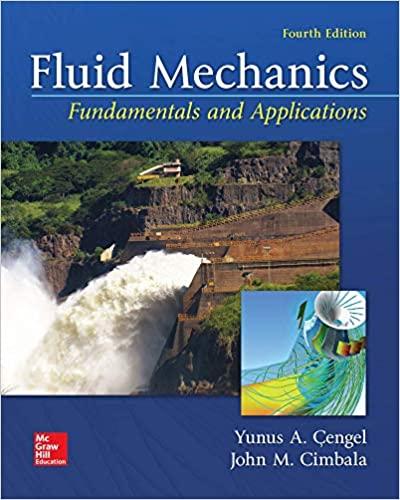A diffuser in a pipe flow is basically a slow expansion of the pipe diameter, which slows
Question:
A diffuser in a pipe flow is basically a slow expansion of the pipe diameter, which slows down the fluid velocity and increases the pressure (the Bernoulli effect). Water at room temperature flows with a volume flow rate of 0.0250 \(\mathrm{m}^{3} / \mathrm{s}\) through a horizontal diffuser in which the pipe diameter increases gradually from \(D_{1}=6.00\) to \(D_{2}=11.00 \mathrm{~cm}\). The irreversible head loss through the diffuser is estimated to be \(0.450 \mathrm{~m}\). The flow is turbulent, and the kinetic energy correction factors at both the inlet and outlet of the diffuser are assumed to be 1.05 .

(a) Calculate the pressure difference \(P_{2}-P_{1}\) in units of \(\mathrm{kPa}\) using the energy equation.
(b) Repeat using the Bernoulli equation (ignore irreversible head losses and ignore kinetic energy correction factors-in other words, set the kinetic energy correction factors to 1). Calculate the percentage error in the result due to the Bernoulli approximation, and explain why (or why not) Bernoulli is applicable here.
(c) It may be surprising that the answer to part (a) is positive, i.e., the pressure rises downstream. How is this possible? Explain by calculating the change i \(\mathrm{n}\) energy grade line \(\Delta \mathrm{EGL}\) and the change in hydraulic grade line \(\Delta \mathrm{HGL}\) from the upstream to the downstream location. In particular, does EGL go up or down, and does HGL go up or down?
Step by Step Answer:

Fluid Mechanics Fundamentals And Applications
ISBN: 9781259696534
4th Edition
Authors: Yunus Cengel, John Cimbala





